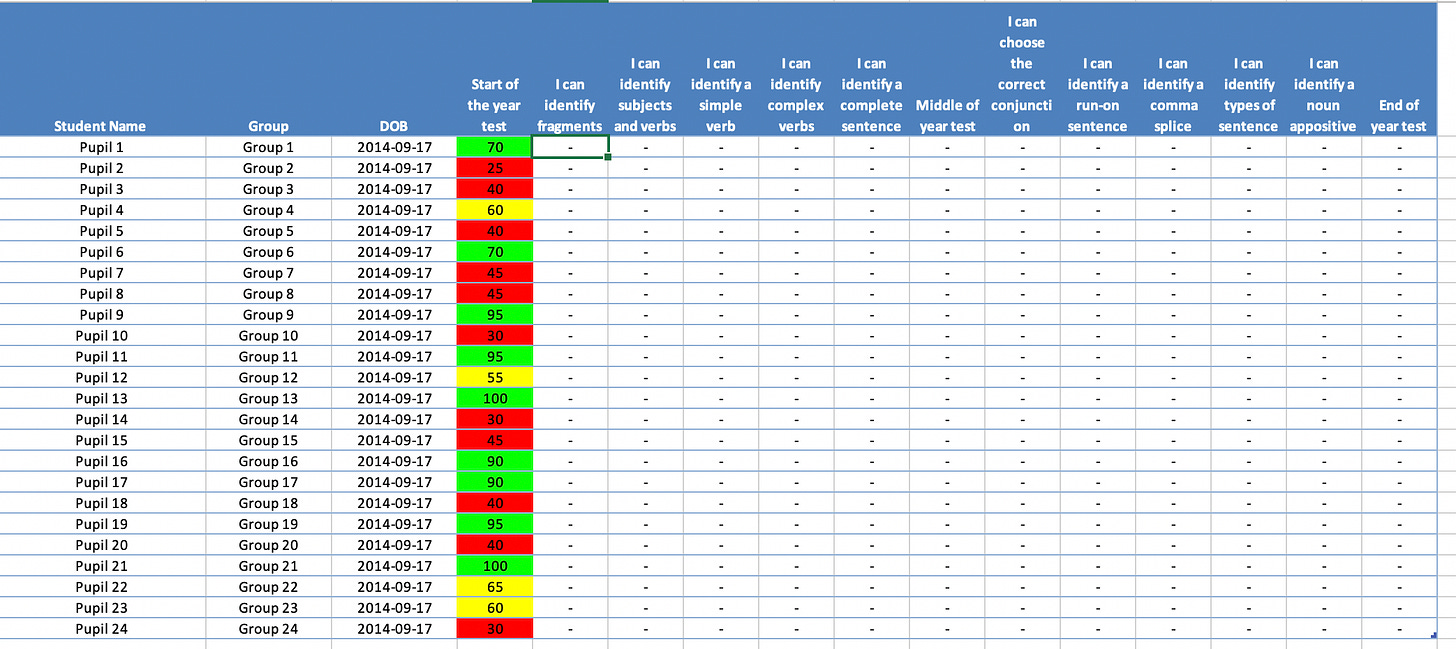The No More Marking Writing Progression
Statement banks, done right
If you’d like to see how the No More Marking Writing Progression works, register for our free webinar on Monday 1st July, 4pm UK time.
At No More Marking, we use Comparative Judgement to assess students’ writing. It’s a more reliable and valid way of assessing extended pieces of writing, and over the last 6 years we have worked with 2,000 schools to assess nearly 2 million pieces of student writing.
Comparative Judgement works best when used 1-3 times a year to assess students’ progress at challenging and authentic writing tasks. One question our schools often ask is how they should monitor students’ progress in between those assessment points.
A lot of the schools we work with have access to some kind of learning progression or learning ladder which will set out a series of statements that students need to achieve. Here are some examples from England, the US and Australia respectively.
Often, teachers will enter these statements into a spreadsheet and tick off when their students achieve each one. Despite its popularity, we’ve always been wary of this approach, for the following reason: these statements sound objective but in reality it is very hard to interpret them consistently!
This is one of the most persistent findings in the assessment literature. Here’s a good example using a maths progression statement.
If this is a problem with an objective subject like maths, how much more of a problem will it be with statements like ‘can use vocabulary with originality and flair’? You can have banks of these statements in a spreadsheet, and spend hours ticking them off for each student - but you have no idea if those judgements are consistent or not.
So what is the solution? It would be good to have some statements about the granular detail a student needs to work on, but how can we make sure those statements provide a consistent meaning?
Here is our solution.
The No More Marking Writing Progression
We’ve worked with The Writing Revolution to identify ten important concepts that will help students become better writers.
We’ve defined these as statements, of the type you might see on a typical learning ladder.
But there is a crucial difference: each statement is attached to a set of ten multiple-choice questions. Teachers can measure a student’s performance on each statement, based on how many questions they get right.
Students can take each set of questions on paper. Teachers can scan in the papers to our Writing Progression website which will automatically mark and analyse the responses, and provide a colour-coded spreadsheet - just one that is consistent, because the numbers & colours on it are based on responses to specific questions.
We will also be creating quizzes for other subjects, and allowing teachers to create their own sets of statements and quizzes. It will all be paper-based, so no messing around with student logins, wi-fi and devices.
We will be launching the statements with our Australian subscriber schools in April 2024 and then later with our UK and US subscribers.
You can now view our Writing Progression here. The full sequence is available for subscribers, but we have made the first 3 statements available for everyone. You can also watch a recording of a Writing Progression information webinar by going to the “Previous” tab at this link.





Will the scores in the quizzes also be matched to the results of student writing tasks? How will you test that what the quiz questions measure is valid?
The fractions problem reminds me of this story: https://www.snopes.com/news/2022/06/17/third-pound-burger-fractions/?cmdf=3%2F4+pound+burger+failure